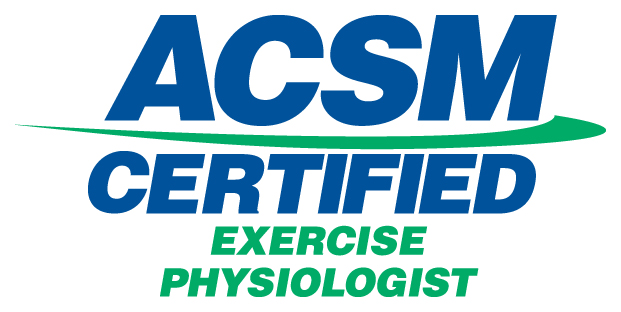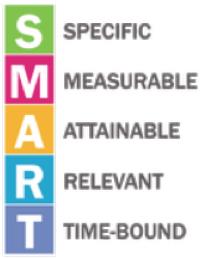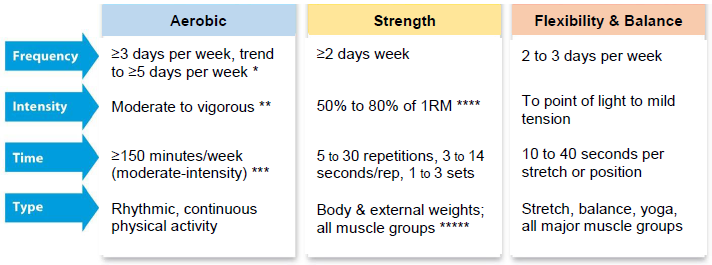-

-
Jim Grizzell,
MBA, MA
-

 -
Master Certified Health
Education Specialist #2670
-
ACSM Exercise Physiologist -
Certified #17
-
Fellow - American
College Health Association
-
40 years of fitness and
health education experience
-
-
jimgrizzell@healthedpartners.org
Mission
Help professionals, individuals and
groups use evidence-based
cost-effective health promotion
and wellness programs to improve
living, learning, working and
playing conditions.
Health Links
Healthy People 2020 National Health
Goals Draft Model from 2007 (pdf)
Healthy People 2020 National Health
Goals
Healthy People 2010
National Health Goals
Values
Passion - Compassion
Contact Jim at:
jimgrizzell@healthedpartners.org
|
|
Tools to Create a Healthy
Aging Exercise Program
Evidence-Based and
Evidence-Informed Guidelines
The files
below can help you develop your own
exercise program to improve physical
and mental health (be active with
energy and without undue fatigue, cognition,
learning, understanding, memory).
Click on the links to download pdf
files.
Let me know if you have questions or
need help. --- Jim
Handout -
Create Your Healthy Aging
Exercise Program: 5-page pdf file. Page one has an overview. Next
four pages have explanations
and definitions of SMART
goal setting and the FITT principles (Frequency,
Intensity, Time/Duration,
Type). Page
five has an Alzheimer's
Association needs assessment
SMART goal worksheet.
Recommendations are primarily
based on the 2018 Scientific Report,
>60-page Brain Health
and Older Adult chapters
by the
National Physical
Activity Guidelines for
Americans Advisory
Committee.
Page one has an overview. Next
four pages have explanations
and definitions of SMART
goal setting and the FITT principles (Frequency,
Intensity, Time/Duration,
Type). Page
five has an Alzheimer's
Association needs assessment
SMART goal worksheet.
Recommendations are primarily
based on the 2018 Scientific Report,
>60-page Brain Health
and Older Adult chapters
by the
National Physical
Activity Guidelines for
Americans Advisory
Committee.
The FITT Principle
graphic shows the wide ranges of
effective days per week,
intensities, time (duration) and
types of exercise you can do to
improve physical and mental health. See pages 2, 3
and 4 of the handout to help you
select specific guidelines for your
needs.

-
Asterisks (*): see pages 2 - 4
of the handout for descriptions
and definitions (i.e., RM).
Key
ideas to start and in the handout:
Be sure,
of course, to check with your
doctor.
Get Rossmoor Tice Creek Fitness
Center clearance forms at this
page (Physician Release and
PAR-Q (Physical Activity
Readiness Questionnaire):
http://www.ticefitnesscenter.com/clearance-forms/
The guidelines here can help you go into your
two free training sessions at
the Rossmoor
Tice Creek Fitness
Center very well informed. You
can tell the trainer what you
know about intensity, duration,
type and frequency of exercise
and your expectations for your
brain health.
Been inactive? Not
exercising much yet?
You can probably start with 5
minutes of easy walking several
times a day 5 to 6 days per
week.
An effective approach for exercise is to
use
the FITT Principle (Frequency,
Intensity, Time, Type)
Aerobic Intensity:
Moderate is best. Work to
be able to do moderate intensity
(see description on page 2 of
the handout) – be able to talk
but can’t sing. There’s an
inverted U curve for intensity
for best brain health. Moderate
intensity can give better brain
health benefits than light and
vigorous.
Aerobic
time/duration: work to do +/>150
minutes per week. Best
minimum duration per session for
brain health seems to be 11 to
20 minutes.
Strength train is
needed for physical and mental health. Two times per week for about an
hour each time. Intensity can be
with weights you can lift 10
repetitions (heavy) to very
light (30 repetitions). Be sure
to exercise all major muscle
groups (about 10 different
exercises). Safe and effective
speed per repetition can be very
slow and controlled at about 10
to 14 seconds per repetition.
(details are on page 3 of the
handout).
And,
balance
and flexibility exercise should
be done. Details are in
the handout.
The 5th page of the
handout has an Alzheimer’s
Association worksheet for
setting a SMART goal.
The tools below are
from the community college class
I teach on health. Students are
required to do an 18 week
behavior change project using
the tools. The first 6 weeks are
for assessing
health status, behaviors and
needs, and planning.
The middle six weeks of the
semester are for implementing an attempt
to change one (1)
behavior. The last six
weeks are for evaluating
and reflecting on how
the behavior change project went
and write a research paper using
references on the behavior
selected and describing the
experience.
You can
use the tools below for your FITT
exercise or any other behavior.
-
SMART Goal Setting and Behavior
Change Tools - These
tools help you assess your
health status and health needs
and reasons you have for
improving your health. Use these
to set priorities (what is most
important for and depending on
your needs and interests,
Additionally, they will help you
plan, implement and evaluate
your program.
-
Assess Your Dimensions of
Health - You will get a
clearer picture of health
areas in which you excel and
those that could use some
work.
-
Personalizing the Six
Dimensions of Health -
This tool will help you
understand how you feel
about your dimensions of
health.
-
Take Charge Assessment
- This is a
comprehensive health status,
lifestyle, locus of control
assessment.
-
Plan Change - This tool
will help you select a
behavior your are most
interested in trying to
change now. You will
understand and monitor the
behavior, set some short-
and long-term goals, and
identify obstacles and
solutions to get around
them.
-
Commit to Change - This
is a behavior change
contract.
-
Implement Day 1 and Week 1
Evaluation - This tool
will help you track and
evaluate the beginning of
you attempt to change.
-
Implement
Weeks 1 and 2 Evaluation
- Complete this 1-page
evaluation.
-
Implement
Middle Two Weeks
Evaluation - Complete
this 1-page evaluation.
-
Implement
Last Two Weeks Evaluation
- Complete this 1-page
evaluation.
-
Evaluation Reflections -
Use this 1-page form to
reflect on your behavior
change project.
-
Assess Your Health
Dimensions - This is the
same assessment your did at
the beginning. You may be
able to see if you excel in
more areas and if you can
move on to other areas to
try to improve.
|
|
|

